Use the Content Query Web Part in SharePoint Server
The Content Query web part is one of the most
useful web parts. You use it to display information in the current site
or in other sites in the current site collection, based on a query. For
example, if you want to show an aggregation of all the announcements
from all the sites, this web part does it. It is a quite complex web
part with a lot of options (some of which a developer must configure),
but most of them are easy to set up, as shown here. The Content Query
web part is available only in publishing sites and is not available in
sites that are not at least under a root publishing site.
You find the Content Query web part under the
Content Rollup category in the web part selection pane. After it is
added, this web part displays a link to open the web part’s tool pane
to configure the query it should perform.
To modify the query that the web part
performs and display a different kind of content, click the link to
open the tool pane for the web part (see Figure 5).
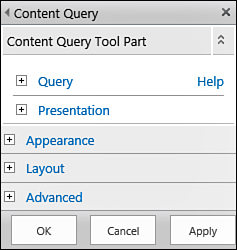
FIGURE 5 The tool pane for the Content Query web part.
In the tool pane, expand the Query section to see the options to specify what content should be displayed and from where (see Figure 6).
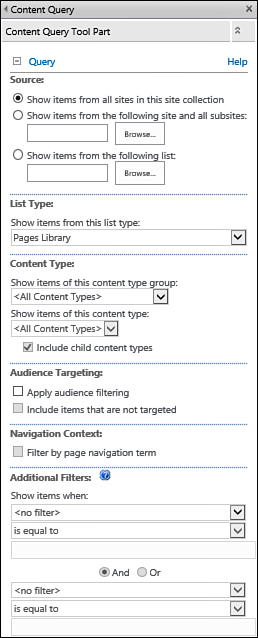
FIGURE 6 The Query section of the content query web part tool pane.
You can specify whether the query will be on
all sites in the site collection, on a specific site and its subsites,
or on just a specific list. For the last two options, use the Browse
button to open a dialog that enables you to select the site or list in
question (see Figure 7). Click OK to return to the Content Query web part tool pane.
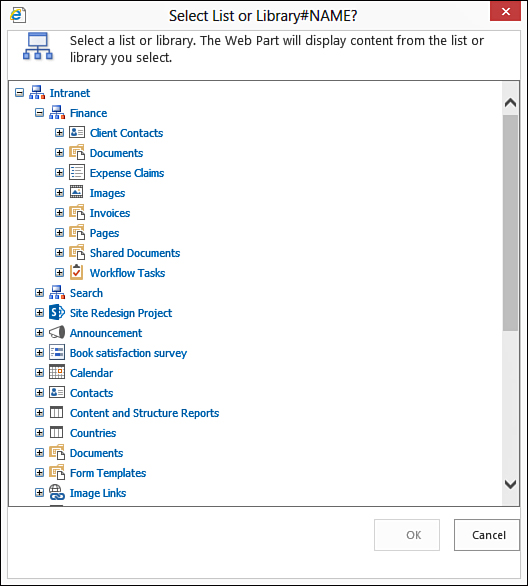
FIGURE 7 Selecting a list for the Content Query web part.
In the List Type selection box, you can
define what kind of list type the web part should look in for its
content. This includes document libraries, pages libraries, picture
libraries, and all other list templates.
The Content Type section enables you to
select what content types the web part will limit its query to. If you
don’t want to specify a content type, you can leave it at the default
All Content Types. Otherwise, you can limit it to a group of content
types (for example, all the document content types) and to a specific
content type. To do that, select the content type group (for example,
document content types) and then either select All Content Types in the
second drop-down menu or select the specific content type that you want.
Next, you can set the filters (see Figure 8).
You can specify that the web part will display only list items or
documents that have specific values in specific columns by setting up
to three filters on the web part. To do so, scroll down in the tool
pane to the Filters section, and under Show Items When, you select the
column you want, the kind of filter you want, and
the value to filter on. For example, select Company Is Equal to
AdventureWorks or Article Date Is Equal to Today.
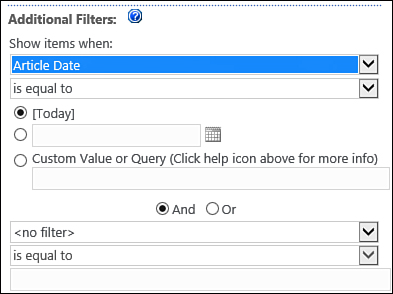
FIGURE 8 The Filter section in the Content Query web part, with a filter specified on Article Date Is Equal to Today.
In addition to configuring the query itself,
you can modify how the items will be displayed by expanding the
Presentation section of the pane. You can specify how many items should
be displayed; how they should be sorted, grouped, or styled; and which
columns to display (see Figure 9).
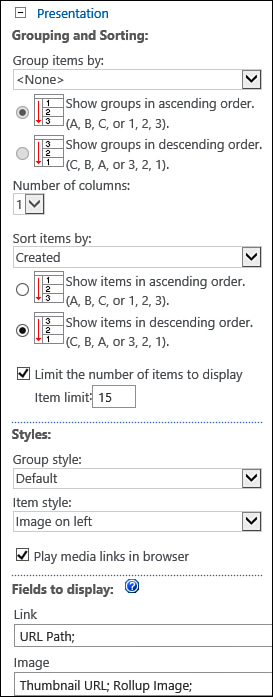
FIGURE 9 The Presentation section in the Content Query web part.